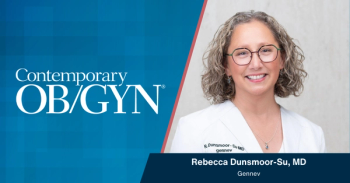
Editorial: Yes to mandatory HPV vaccination
The Advisory Committee on Immunization Practices of the CDC recommends vaccination in females aged 11-12 years with catch-up vaccination in females aged 13-26 who have not been previously vaccinated.
Key Points
The results of a randomized, double-blind trial recently published in the New England Journal of Medicine have reinvigorated the debate about mandated human papillomavirus (HPV) vaccination. The FUTURE II Study group found that a quadrivalent vaccine against HPV 6, 11, 16, and 18 prevented 98% of HPV-16/18 related high-grade cervical lesions (i.e., CIN 2 and 3, adenocarcinoma in situ and invasive cancer) over a 3-year observation period in women aged 15 through 26 years.1 In this trial, 12,167 women were randomized to a 3 dose (day 1, month 2, and month 6) regimen of vaccine versus placebo. However, these salutary results were only observed in compliant women who had negative DNA and serological testing for HPV 16 and 18 during the initial 7-month treatment period. In contrast, only a 17% efficacy rate was observed in the "real world" intention-to-treat performance of the vaccine in this age group since so many women were already infected. Moreover, in the general population 129 women would need to be vaccinated to prevent one high-grade lesion. Thus, the key to prevention is vaccination prior to sexual activity.
THREE SETS OF ARGUMENTS have been put forth against vaccination. One is a libertarian objection to any such state mandate since it violates parental autonomy. However, this viewpoint is easily dismissed given the long public health tradition and substantial body of court rulings compelling vaccination for the public good.5 The second argument posed against mandated HPV-vaccination is cost. The three-dose series will cost an estimated $360. Physicians may not be willing to provide vaccination in their office without assurance of reimbursement and cash-strapped school districts and state governments may also not want to burden their treasuries to prevent a disease that is relatively rare, not transmissible by routine contact, and easily preventable with strict adherence to existing preventative schemes.
Should vaccination be mandated and children refused entry into school unless their parents offer compelling arguments against such therapy? Should our health-care system be obliged to absorb the cost of a widespread vaccination program? Let us examine the major issues.
The scientific arguments
Gardasil [quadrivalent human papillomavirus (types 6,11,16,18) recombinant vaccine] was licensed by the FDA in June 2006 and is now commercially available. The L1 major capsid protein is the target immunogen. The vaccine is administered as an intramuscular injection (0.5 mL) on the selected start date. The second dose is given 2 months after the first dose, and the third dose 6 months after the first dose. While the ideal goal is to begin the series prior to sexual activity and therefore prior to exposure to HPV, the vaccine can be given to those patients who are presumably positive for at least one of the targeted HPV subtypes since the vaccine has been shown to be highly effective in preventing disease caused by the remaining unexposed subtypes. Studies have demonstrated that the efficacy lasts for at least 5 years and ongoing studies are underway to determine the true duration of protection.
Newsletter
Get the latest clinical updates, case studies, and expert commentary in obstetric and gynecologic care. Sign up now to stay informed.











